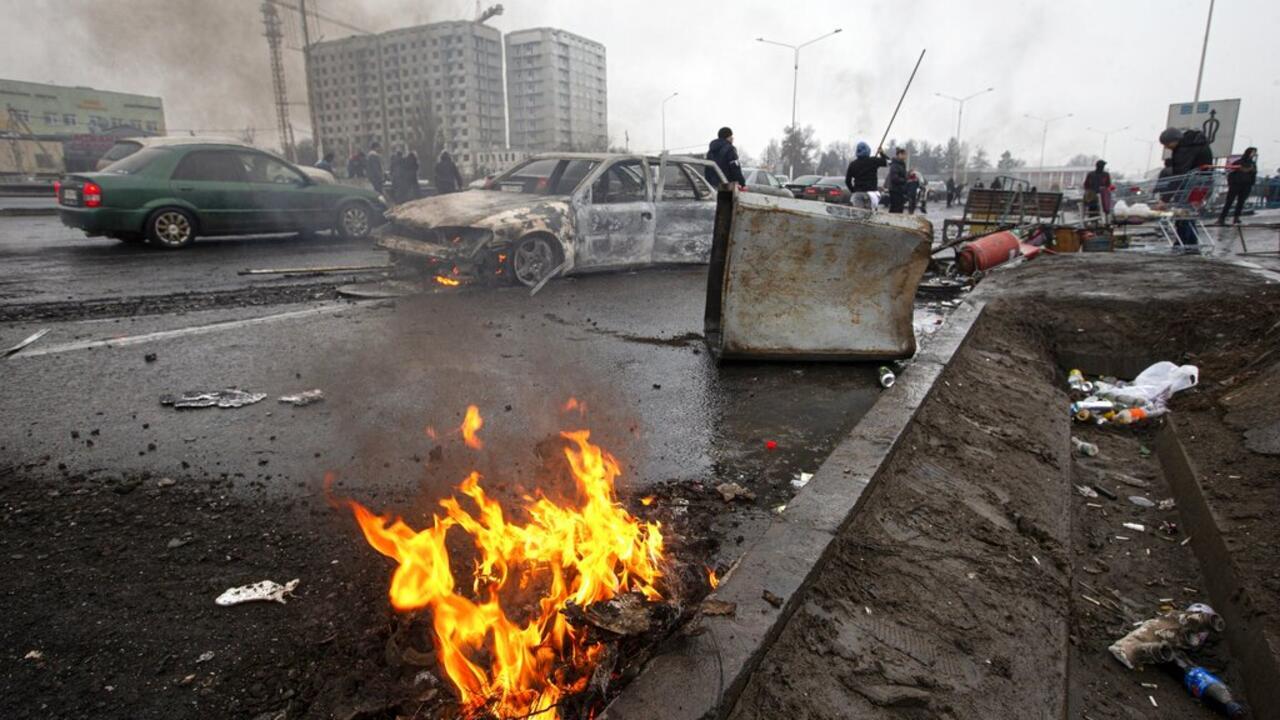Bloody January in Kazakhstan: return of reporting with Anissa El Jabri
Audio 7:30 p.m.
People walk past cars that were burned after clashes, on a street in Almaty, Kazakhstan, January 7, 2022. © Vasily Krestyaninov/AP
By: Anne Corpet Follow
1 min
Kazakhstan, a former Soviet Republic, desert, but with a subsoil full of minerals, brutally wavered in violence at the beginning of January 2022 with demonstrations against a rise in the price of gas, then inflamed against a backdrop of social inequalities, the protest has become political, violent.
Advertising
The most serious unrest recorded in this Central Asian country in 30 years of independence.
A chaos perhaps orchestrated.
To restore order, the president in any case called on the forces of the OSTC, a de facto regional military alliance led by Russia, which sent its troops.
In the background, the conflict between President Kassym-Jomart Tokaiev and his predecessor, the autocrat Nursultan Nazerbayev.
Two weeks after severe repression and the return to calm, the president regained control of power.
He dismissed relatives of his predecessor.
But the confusion remains on this bloody January.
There were 225 dead, hundreds injured and more than ten thousand people arrested.
Today, Décryptage tries to unravel the thread of events with
Anissa El Jabri,
our permanent special correspondent in Moscow.
She has just returned from Kazakhstan.
►
To listen also: Kazakhstan: Janaozen, at the origins of the revolt.
Newsletter
Receive all the international news directly in your mailbox
I subscribe
Follow all the international news by downloading the RFI application
google-play-badge_EN
Kazakhstan
Russia
On the same subject
Kazakhstan: the toll of arrests after the riots in early January becomes clearer
Reporting
Kazakhstan: in Almaty, the climate remains very heavy even after the withdrawal of the Russian armed forces
International reporting
Dead and missing, the search for truth in Kazakhstan

